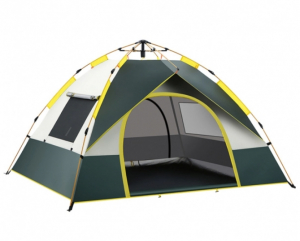News Center+ 查看更多
News Center
+ 查看更多
The Camper's Expert Guide: Secrets to Identifying High-Quality, Durable Gear+ 查看更多
The Camper's Expert Guide: Secrets to Identifying High-Quality, Durable Gear
+ 查看更多
Date:2024-03-06
Camping is a popular outdoor activity where the choice of equipment significantly affects safety and comfort. This article delves into how to distinguish high-quality and durable camping gear, providing practical parameters and case studies to assist campers in making informed purchasing decisions.
Key Performance Parameters and Testing Standards
1. Material Strength
- Tent Fabric: Commonly measured in Denier (D), which indicates the fineness and density of the fibers. A higher Denier count means better abrasion resistance.
- Load-Bearing Parts: Such as tent poles, should be made of strong yet lightweight materials like high-strength aluminum alloy or carbon fiber.
2. Waterproofing and Breathability
- Waterproof Metrics: Tent waterproofness is measured in terms of hydrostatic head value (mmH2O). A high standard for waterproofing typically starts at 3000 mmH2O.
- Breathability: Assessed by the breathability coefficient (g/m²/24h), ensuring air circulation while maintaining waterproof properties.
3. Structural Design
- Wind-Resistant Structures: Dome and tunnel designs are beneficial in withstanding strong winds.
- Stability: Extra anchoring points with stakes and guy lines enhance stability.
Practical Case Studies
High-Altitude Camping Insights
An experienced mountaineer camped at the Everest Base Camp using a specialized four-season tent. The tent was constructed with 70D nylon fabric featuring an ultra-high waterproof rating of 5000 mmH2O. Its dome structure, reinforced with multiple guy lines, remained stable even in wind speeds of 50 kilometres per hour, while a high breathability rating of 5000g/m²/24h ensured adequate ventilation, preventing condensation inside.
Tropical Rainforest Expedition Log
During an expedition through the Amazon rainforest, all team members were equipped with backpacks designed with superior waterproofing and quick drainage systems. These backpacks featured special drainage holes at the bottom, allowing for rapid water ejection even during heavy rainfall, keeping the contents dry.
Conclusion
Assessing the durability of camping gear requires looking at technical parameters and the needs within the actual usage context. High-quality camping equipment should exhibit high strength, waterproof and breathable properties, along with robust and enduring characteristics. By considering materials, design, and functionality, and synthesizing real user experiences with professional testing data, consumers can more accurately judge the performance of the gear. Whether climbing mountains or trekking through jungles, choosing the right equipment will make any camping trip safer and more enjoyable.

